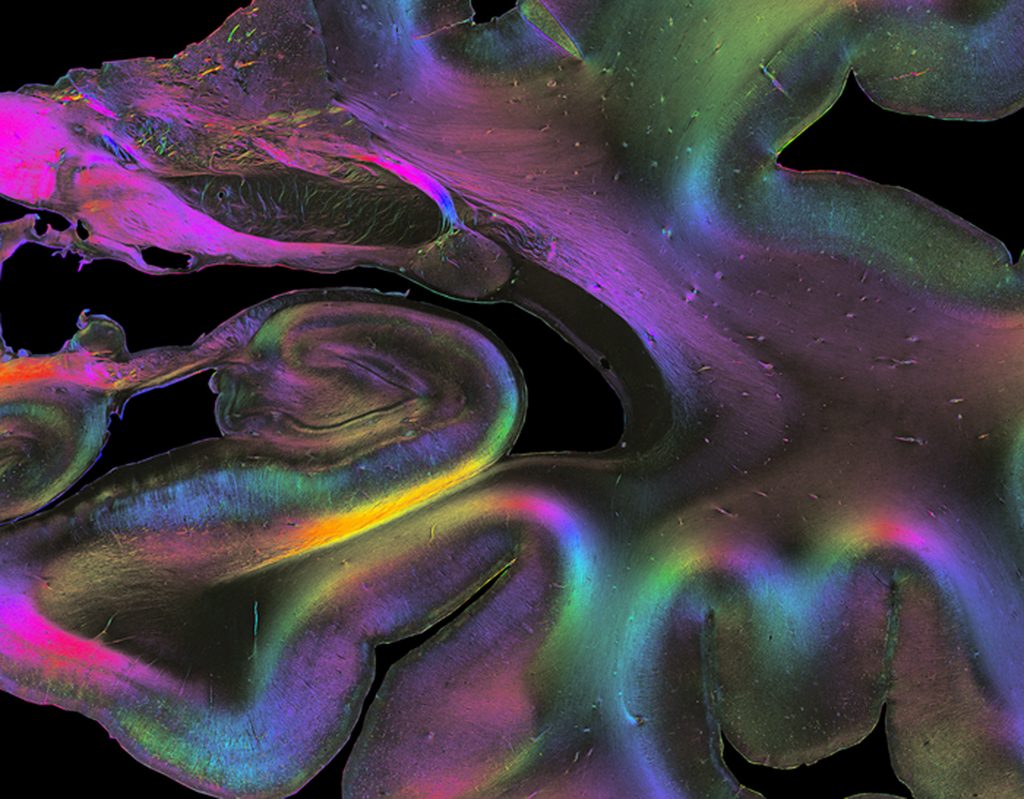
This colorful image shows the three-dimensional alignment of nerve connections in a polarized light microscopy slice of the hippocampus - our brain's memory center.
It is still a difficult task to understand and study the brain with all its complex connections. Researchers from the "Human Brain Project" have set themselves the task of making all of these connections, the so-called connectome, more accessible in a 3D brain atlas. “The connectome is nested on several levels. In order to understand its structure, we need to look at several orders of magnitude simultaneously by combining different experimental methods in a multiscale approach and integrating the data obtained into a multi-layered atlas, such as the Julich Brain Atlas we developed,” explains Katrin Amunts from Research Center Jülich, the scientific director of the "Human Brain Project".
In order to map the nerve cell connections three-dimensionally, the same tissue section of a human hippocampus was examined using different methods. These included anatomical and diffusion-weighted magnetic resonance imaging (aMRI and dMRI) and two-photon fluorescence microscopy (TPFM). These methods are used for either microscopic or macroscopic imaging of brain tissue. In addition, the team used a newly developed method of polarized imaging (3D Polarized Light Imaging). With this, the orientation of the nerve fibers can be recorded on a microscopic level and the entire brain can be imaged at the same time.
The image shows a section of the hippocampus created using 3D polarized light imaging. The colors represent the different orientations of the long nerve cell extensions, the so-called axons. They connect the neurons in this brain region to each other and to other areas of the brain.
So far, the 3D brain atlas includes more than 250 cytoarchitectural maps of different brain areas. Despite the wealth of information that the researchers were able to add to this multi-stage approach, the work is not over yet. At the moment several similar international projects are running or starting. Ultimately, a freely accessible, powerful tool for neuroscience and medicine should be created.